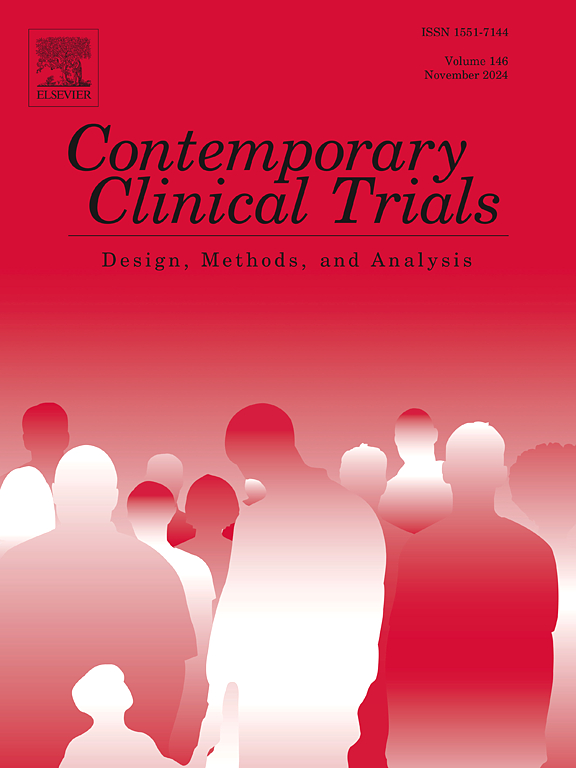A protocol for high-dose lisdexamfetamine and contingency management, alone or in combination, for the treatment of methamphetamine use disorder: The ASCME study
IF 2
3区 医学
Q3 MEDICINE, RESEARCH & EXPERIMENTAL
引用次数: 0
Abstract
Background
The prevalence of methamphetamine use disorder is increasing in North America. Well-evidenced treatment options are currently limited to behavioural interventions, with contingency management (CM) regarded as the most effective approach. Psychostimulants have been identified as a potentially promising treatment for methamphetamine use disorder, particularly at higher doses. This study was designed to examine the effectiveness of a high-dose daily psychostimulant (lisdexamfetamine; LDX) and CM, both alone and in combination, in addition to treatment-as-usual (TAU) for the treatment of moderate-to-severe methamphetamine use disorder.
Methods
The ASCME study is a multicentre, four-arm, blinded, randomized, placebo-controlled clinical trial examining the effectiveness of adding LDX (250 mg) and CM, alone or in combination, to TAU in reducing days of methamphetamine use among adults with moderate-to-severe methamphetamine use disorder. A total of 440 participants will be randomized across 5 sites to 12 weeks of 1) LDX + TAU + CM; 2) LDX + TAU; 3) placebo + CM + TAU; and 4) placebo + TAU. The primary outcome is reduction in days of self-reported methamphetamine use, with secondary outcomes including treatment retention, sustained abstinence, safety, medication adherence, satisfaction, and quality of life.
Conclusion
This study will be the largest study to date examining the effectiveness of a prescribed psychostimulant in the treatment of methamphetamine use disorder, and the first of its kind to employ a four-arm approach to evaluate the added benefit of its combination with CM on psychostimulant treatment. The development of pharmacologic treatments for methamphetamine use disorder remains an urgent research goal.
用于治疗甲基苯丙胺使用障碍的大剂量利地安非他明和应急管理方案,单独或联合使用:ASCME研究
在北美,甲基苯丙胺使用障碍的流行率正在上升。证据充分的治疗方案目前仅限于行为干预,而应急管理(CM)被认为是最有效的方法。精神兴奋剂已被确定为治疗甲基苯丙胺使用障碍的一种潜在的有希望的治疗方法,特别是在高剂量时。本研究旨在检验每日大剂量精神兴奋剂(利地胺非他明;除常规治疗(TAU)外,还可单独或联合使用LDX和CM,用于治疗中度至重度甲基苯丙胺使用障碍。ASCME研究是一项多中心、四组、盲法、随机、安慰剂对照临床试验,研究在TAU中单独或联合添加LDX(250 mg)和CM在减少中度至重度甲基苯丙胺使用障碍成人中甲基苯丙胺使用天数的有效性。总共440名参与者将被随机分配到5个站点,进行12周 试验:1)LDX + TAU + CM;2) LDX + τ;3)安慰剂+ CM + TAU;4)安慰剂+ TAU。主要结果是自我报告甲基苯丙胺使用天数的减少,次要结果包括治疗保持、持续戒断、安全性、药物依从性、满意度和生活质量。本研究将是迄今为止最大的一项研究,旨在检验处方精神兴奋剂治疗甲基苯丙胺使用障碍的有效性,也是同类研究中首次采用四组方法来评估其与CM联合治疗精神兴奋剂的额外益处。开发甲基苯丙胺使用障碍的药物治疗方法仍然是一个迫切的研究目标。
本文章由计算机程序翻译,如有差异,请以英文原文为准。
求助全文
约1分钟内获得全文
求助全文
来源期刊
CiteScore
3.70
自引率
4.50%
发文量
281
审稿时长
44 days
期刊介绍:
Contemporary Clinical Trials is an international peer reviewed journal that publishes manuscripts pertaining to all aspects of clinical trials, including, but not limited to, design, conduct, analysis, regulation and ethics. Manuscripts submitted should appeal to a readership drawn from disciplines including medicine, biostatistics, epidemiology, computer science, management science, behavioural science, pharmaceutical science, and bioethics. Full-length papers and short communications not exceeding 1,500 words, as well as systemic reviews of clinical trials and methodologies will be published. Perspectives/commentaries on current issues and the impact of clinical trials on the practice of medicine and health policy are also welcome.

 求助内容:
求助内容: 应助结果提醒方式:
应助结果提醒方式:


